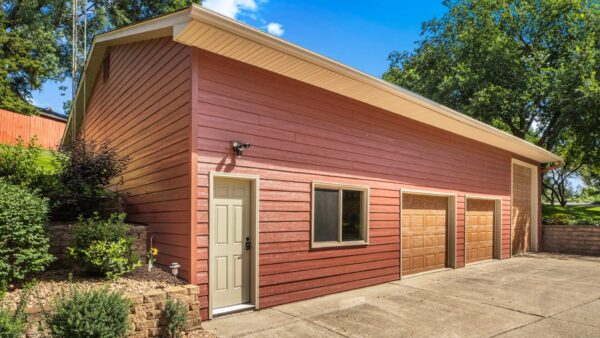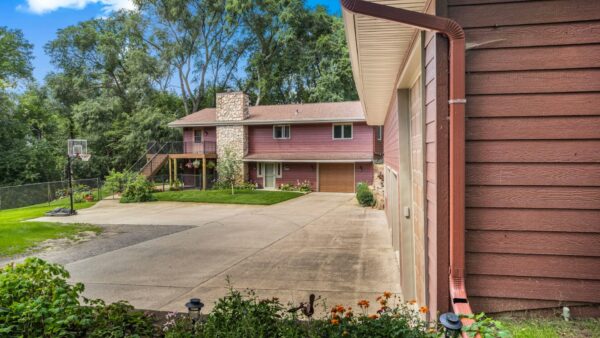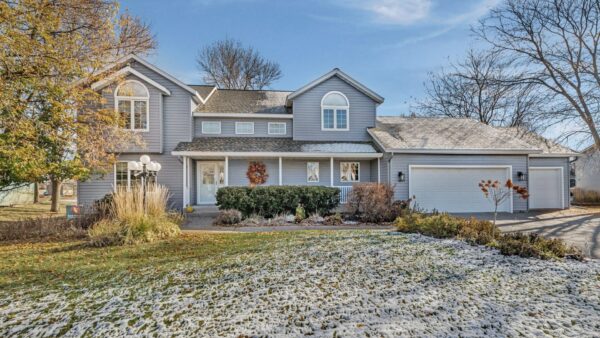Wondering when the best time of year for roof replacement really is? Timing your project right can make all the difference, especially here in Central Minnesota where the weather isn’t exactly shy.
Different seasons affect not only scheduling and material performance but also the long-term resilience of your roof. Whether it’s the freeze-thaw cycles of spring or the unpredictable storms of late summer, each season presents its own set of challenges—and opportunities.
In this guide, we’ll break down how each season affects roof replacement and what you should consider when planning a roofing project.
Pros and Cons of Roof Replacement in Each Season
In Central Minnesota, timing your roof replacement is more than just picking a convenient week—it’s about aligning your project with the weather, contractor availability, and material performance.
Spring: A Strategic Start to the Roofing Season
Pros:
- Ideal Temperatures for Labor and Materials: Spring offers cool, stable temperatures with lower humidity, which creates optimal conditions for roofing crews to work efficiently and for materials—especially asphalt shingles—to perform as intended.
- Opportunity to Address Winter Damage: Spring inspections often reveal issues caused by snow, ice dams, or freeze-thaw cycles. Addressing this damage early can prevent more serious problems down the line.
- Scheduling Flexibility: While spring is a popular time to start home improvement projects, it typically precedes the peak demand of summer. Homeowners may find more open scheduling slots and quicker project starts.
Cons:
- Rain Delays: Central Minnesota springs often come with unpredictable rain showers. Wet conditions can delay installation or halt progress mid-project, affecting timelines and possibly increasing labor costs.
- Thawing Ground Conditions: In early spring, lingering frost in the ground can create challenges for equipment setup or debris removal, particularly in rural or soft-soil areas.
Summer: Peak Season for Production
Pros:
- Optimal Conditions for Shingle Adhesion: Heat helps asphalt shingles seal properly, enhancing wind resistance and water protection. This makes summer ideal for installing most common roofing materials.
- Extended Daylight for Faster Completion: Long daylight hours allow roofing crews to work longer days, speeding up installation and minimizing disruption to your daily routine.
- Typically Dry Weather: Minnesota summers, especially in early and mid-season, tend to be drier, reducing the chance of weather-related delays.
Cons:
- Excessive Heat Can Be a Problem: While warmth is beneficial, excessive heat—especially in July and August—can make it difficult for crews to work safely and comfortably.
- Material Handling Challenges: Certain roofing materials can be sensitive to direct sunlight and heat, affecting how they are stored and installed. Timing installations earlier in the day is often necessary to maintain material integrity.
Fall: The Golden Window for Roofing in Central Minnesota
Pros:
- Stable Weather Conditions: Fall provides cool temperatures, lower humidity, and minimal precipitation—an ideal trifecta for roof installation.
- Preparation for Winter: A fall replacement ensures your home is protected before the snow flies.
- Strong Material Performance: Shingles tend to install well in fall’s moderate temperatures, and seal properly before the first frost hits.
Cons:
- Tight Scheduling Windows: Because fall is widely considered the best time for roof replacement, contractor schedules often fill quickly. Homeowners who wait until late in the season may face delays or limited availability.
- Fewer Daylight Hours: Shorter days can restrict how many hours crews can work, potentially extending project duration—especially for larger homes or more complex installations.
Winter: Not Ideal, But Sometimes Necessary
Pros:
- Emergency Availability: Most roofing contractors have fewer projects scheduled in winter, which means they can respond quickly to emergency repairs or urgent replacements caused by ice damage, fallen branches, or structural failure.
Cons:
- Material Limitations: Many roofing materials, especially asphalt shingles, are not rated for installation in temperatures below 40°F. Cold weather can make shingles brittle and difficult to nail properly, compromising performance.
- Safety and Workflow Concerns: Snow, ice, and frost can create slippery conditions, increasing the risk of accidents and slowing the pace of work.
- Temporary Fixes Over Full Replacement: In many cases, contractors recommend temporary repairs during winter months, with full replacements postponed until spring for better long-term results.
Final Thoughts: Choosing the Right Season for Your Roof Replacement
There’s no universally perfect time for every roofing project—but there is a right time for your home. Whether you’re addressing urgent damage or planning a long-overdue upgrade, understanding the pros and cons of each season gives you the knowledge to act confidently.
With careful planning and a contractor, like Lutgen, who understands the region’s seasonal nuances, you can protect your investment and extend the life of your roof—regardless of when you build. Learn more about what roof replacement in Central Minnesota entails.




